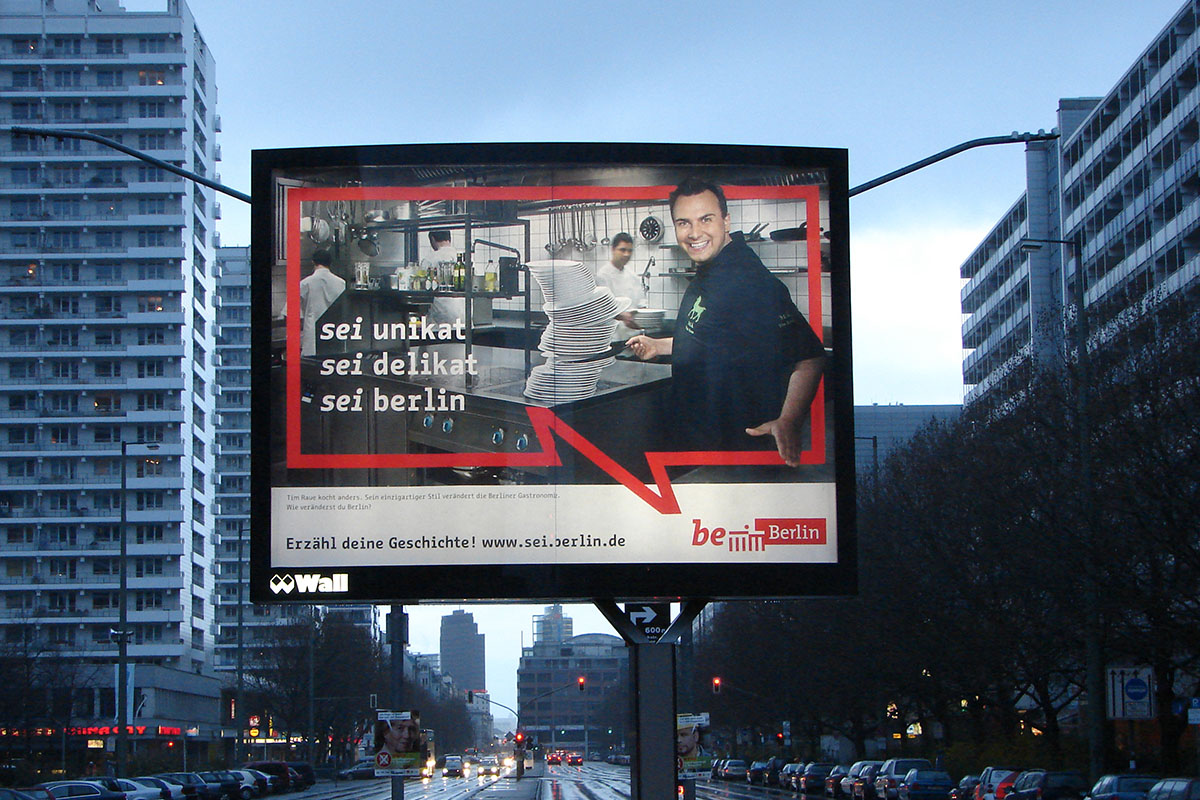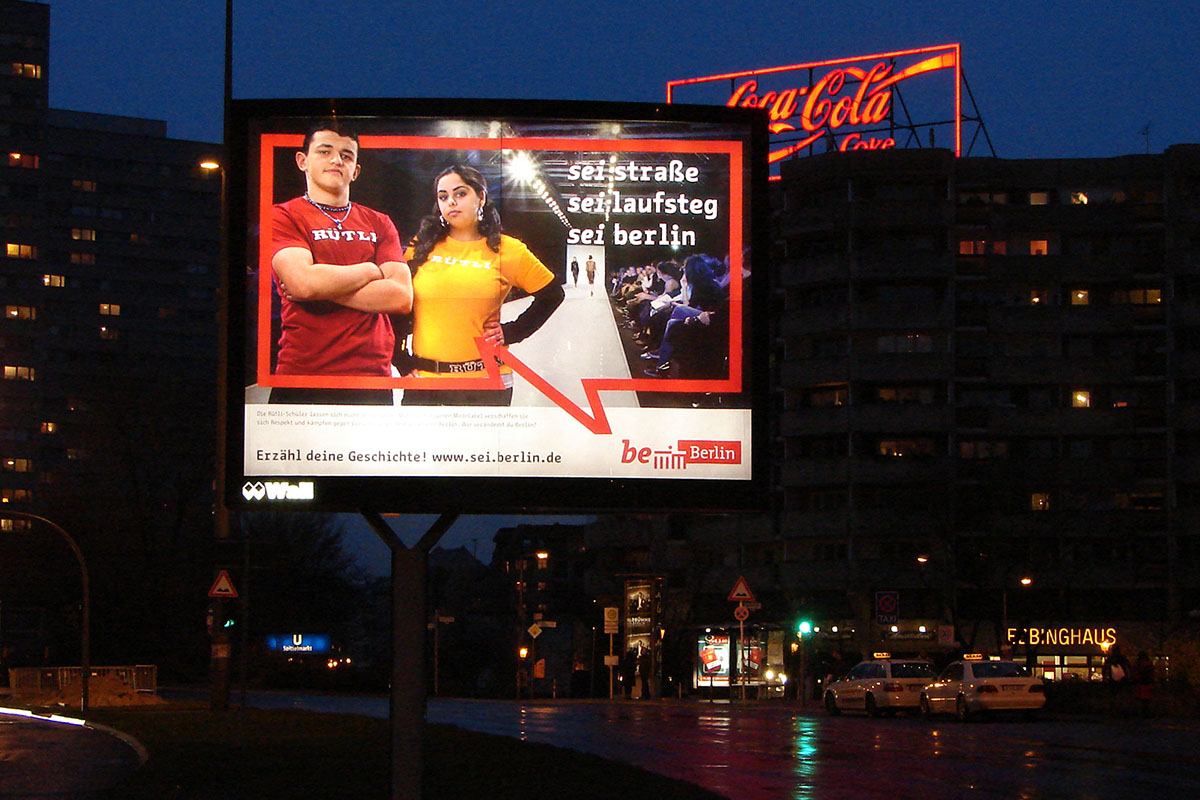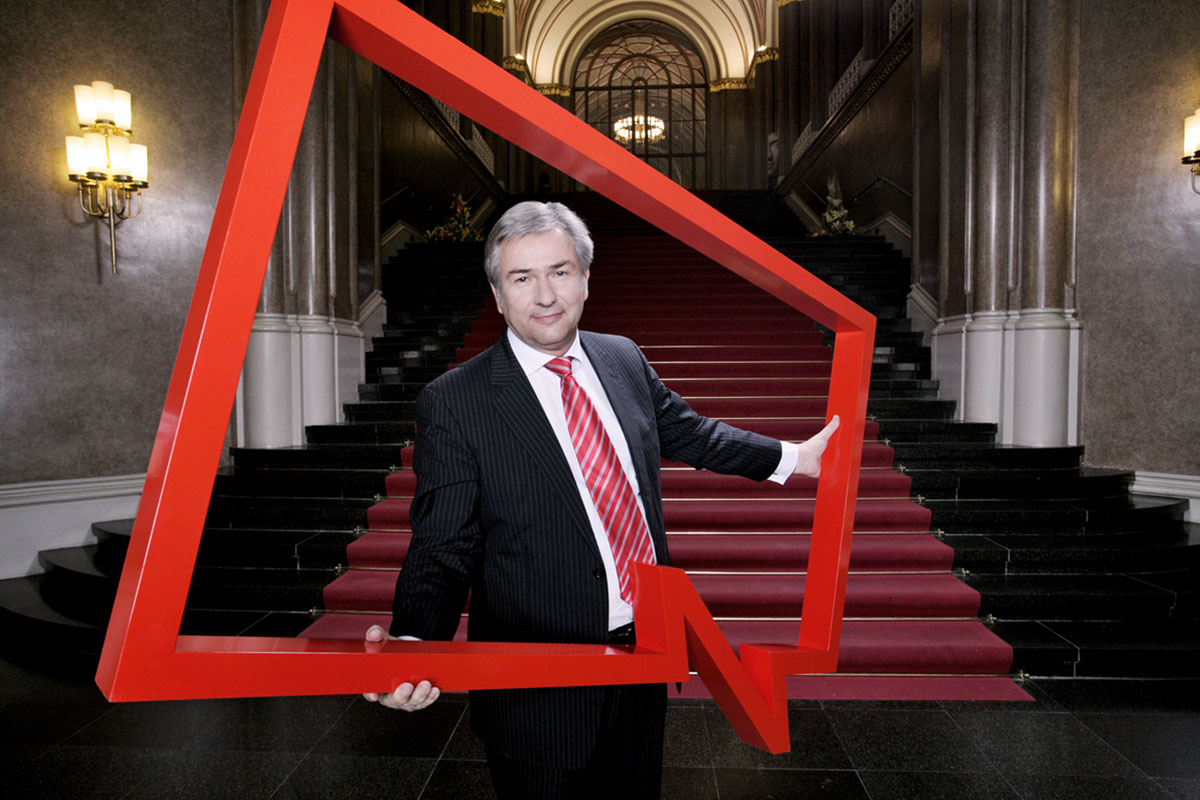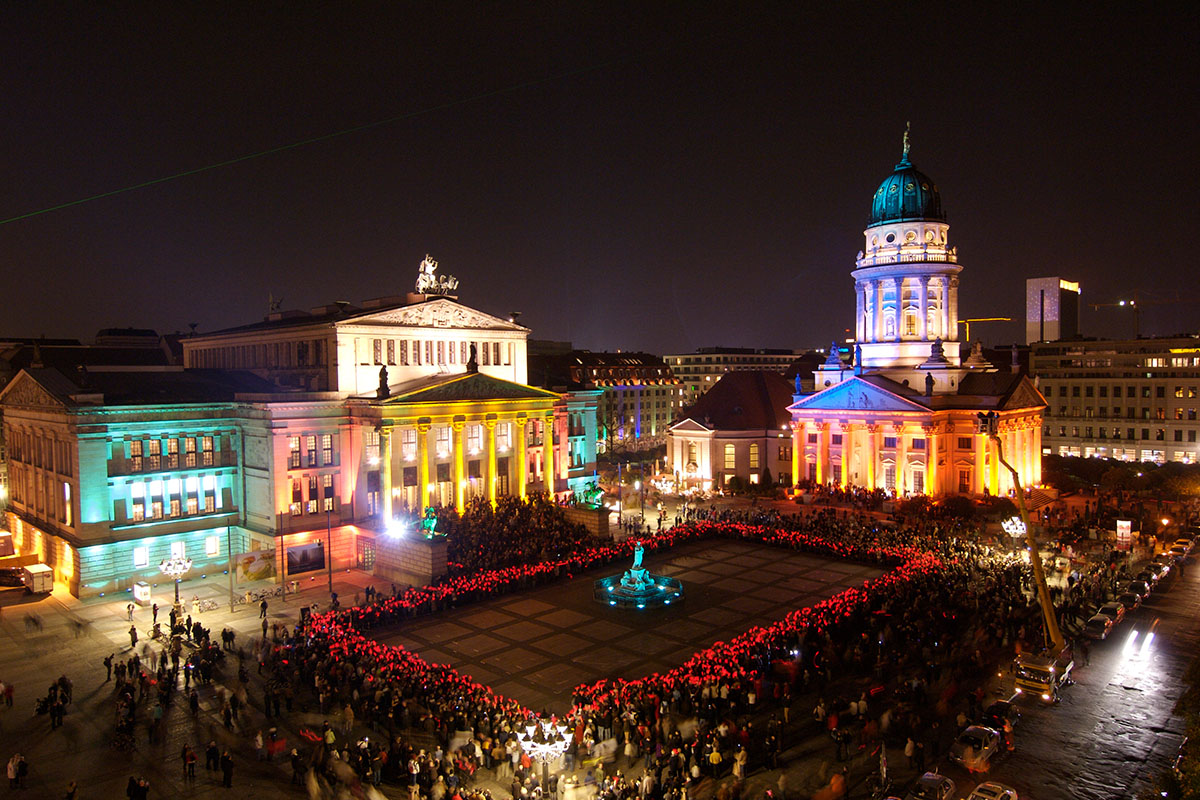September 2020: The city of Berlin presents a new image with a campaign that succeeds the »be Berlin« campaign after more than twelve years. On the one hand, we, the creators of »be Berlin«, are proud that we have now shaped the image of the city for over twelve years; with our slogan and our participatory approach. On the other hand, of course, we have mixed feelings about this.
____________
The new image and the campaign will be measured by the success of »be Berlin«. The campaign proved to be the right campaign at the right time and fulfilled its task for a good twelve years. In 2008, Berlin was the city in flux. »be Berlin« was an invitation to be part of this change. The visual identity linked the capital’s established design with the campaign and, with the speech bubble, provided a broad framework for participation. »be Berlin« was a selfie campaign before the word »selfie« even existed and one of the longest-running participation campaigns in Germany. ‘be Berlin’ was ‘pop’ and was understood far beyond Berlin.
There is some criticism of the new campaign. We also ask ourselves why the city of Berlin is replacing the Brandenburg Gate – the global icon and emotional centre of the city, with which history, the building of the Wall, the fall of the Wall, reunification, the Love Parade and the summer fairytale are linked. We also wonder whether a participatory campaign should only consist of writing your own headlines and colouring in the bear. That may be enough to advertise a branded product in the supermarket, but a city is another matter.
A location brand should be an umbrella for all of the city’s activities, through which it can explain and orientate itself. Why are we doing things this way? What do we do next? If it can accomplish this at all levels, from administration to population, it will become a successful brand. »be Berlin« was aimed at Berliners and newcomers, businesses and tourists and gave them a role in the »city in flux«. Participation went far beyond self-written slogans, it was left up to every citizen with their own ideas, lifestyles and dreams in the city. A participatory campaign does not build identity, but identification with the content builds identity. Is this my Berlin? And what is my role in the city’s next chapter?
»be Berlin« was certainly criticised when it was launched, but even the harshest critics could see what the campaign was trying to say and achieve. Twelve years later, the same critics are writing friendly obituaries for the campaign. The public also scoffed at first, but everyone understood what the brand was trying to communicate.
Whether the new campaign and visual identity can have the same success remains to be seen. We wish the city of Berlin all the best and much success!
Sources:
27.8.2020:
https://www.berlin.de/rbmskzl/aktuelles/pressemitteilungen/2020/pressemitteilung.981711.php
https://www.berlin.de/rbmskzl/service/neue-marke-berlin/
https://www.horizont.net/marketing/nachrichten/wirsindeinberlin-statt-be-berlin-berlin-verpasst-sich-neuen-markenauftritt-und-veraendert-logo-185338
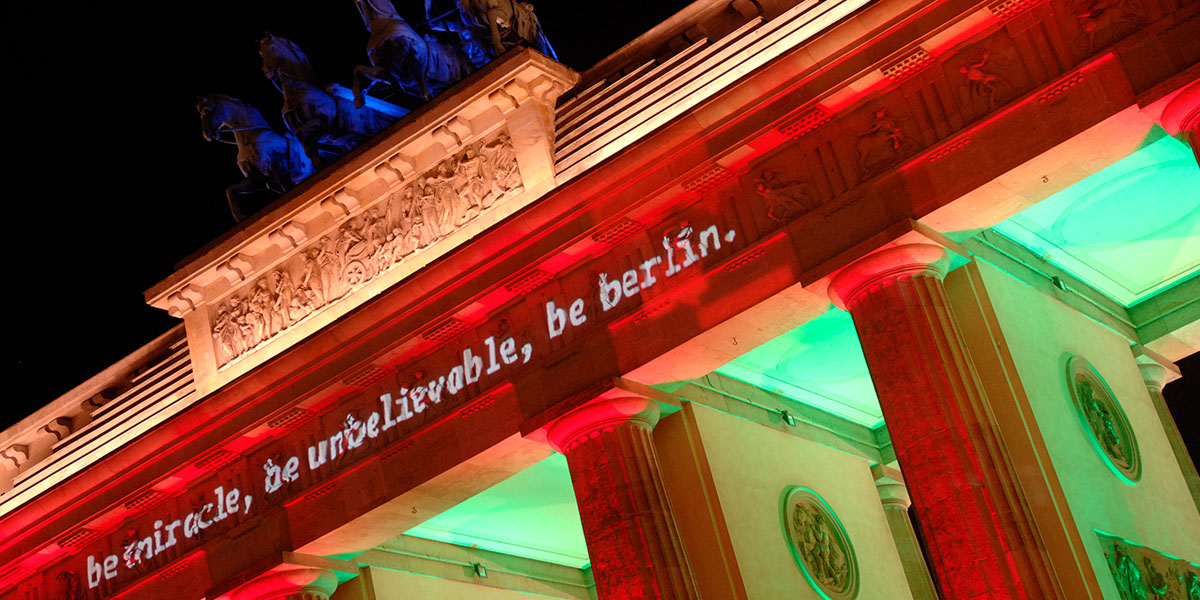
Sei Mensch, sei Wandel, sei Berlin.
Be Berlin turned the people of Berlin into the ambassadors of their city. EMBASSY developed the campaign concept for the state of Berlin with a slogan and speech bubble mechanics as a literal framework for participation. be Berlin was a selfie campaign before there were selfies, a participatory campaign before participation was a buzzword and is the longest-running Earned-Media campaign in Germany.
____________
The city of Berlin wanted to communicate its new logo and brand essence as a »city in flux« with a launch campaign. But how should the capital be portrayed away from construction cranes and »poor but sexy«? And, above all, how to engage the population?
The key insight was that the city of Berlin is not the main actor, but the stage for people and their many life plans.
From this, EMBASSY developed the speech bubble as a visual framework and a triad that could depict the rich contrasts in Berlin.
For the launch campaign, Berliners from Tim Raue to pupils from the Rütli School were featured in the speech bubble and the public was invited to share their own ideas from the outset.
The campaign struck a chord with the Berlin population and those who wanted to become Berliners. The be Berlin three-part slogan made it into popular culture and accompanied the capital on its way to becoming a booming German metropolis that today attracts people from all over the world. After almost 10 years, the selfie frames in the city are still being photographed and the appearance still tells the story of the city in flux.
